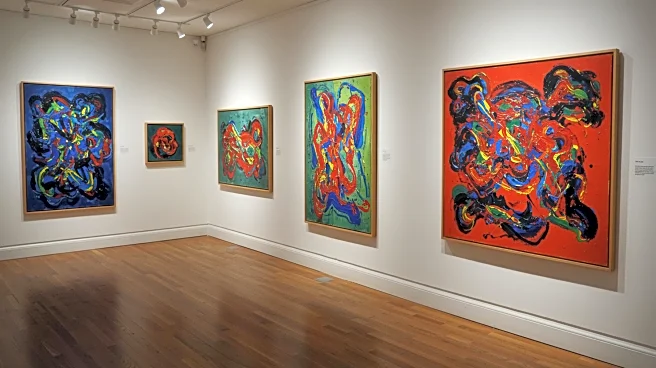What's Happening?
Friedel Dzubas, a German artist who immigrated to the United States during World War II, is set to have a solo exhibition at New York's Lincoln Glen Gallery. The exhibition, titled 'The Slow Unfolding: Friedel Dzubas’ Final Abstractions,' will showcase his work from 1980 to 1989, highlighting his exploration of gesture and color. Dzubas, who shared a studio with Helen Frankenthaler, was a prominent figure in the New York art scene and was associated with Color Field painting and Lyrical Abstraction. The exhibition will include a fully illustrated catalogue with text by curator Dan Cameron, offering insights into Dzubas's artistic journey and contributions.
Why It's Important?
The exhibition marks a resurgence of interest in Friedel Dzubas's work, which had fallen into the margins of art history following his death. Dzubas's contributions to painting, particularly his use of Magna paint and his exploration of gesture and color, are significant in understanding the evolution of post-war art movements. The exhibition provides an opportunity for art enthusiasts and scholars to re-evaluate Dzubas's impact on the art world and his role in shaping modern painting techniques. It also highlights the importance of preserving and revisiting the works of artists who have influenced contemporary art practices.
What's Next?
The exhibition will run from September 11 to November 8, 2025, at Lincoln Glen Gallery in New York. It is expected to attract art historians, critics, and the general public interested in post-war art movements. The gallery may host discussions and events to further explore Dzubas's techniques and influence. The renewed interest in Dzubas's work could lead to more exhibitions and scholarly research, potentially restoring his place in art history.
Beyond the Headlines
Dzubas's work reflects broader themes of spontaneity and improvisation, which were pivotal in the 1980s art scene. His approach to painting, characterized by bands of color and borderless forms, offers insights into the cultural shifts and artistic experimentation of the time. The exhibition may also spark discussions on the ethical considerations of art preservation and the importance of revisiting overlooked artists.











